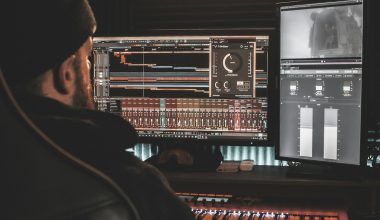As an artist, getting your music in front of the right audience is crucial. One of the best ways to do this is by submitting your music to playlists. Playlists have become the modern-day mixtapes, curated by both humans and algorithms to help listeners discover new songs. They are a powerful tool for independent artists to reach new fans, gain streams, and even catch the attention of industry professionals.
If you’ve been wondering how to submit your music to playlists effectively, this guide is for you. Let’s dive in and explore everything you need to know, from understanding the types of playlists to crafting the perfect submission pitch.
Why Playlists Matter for Your Music Career
Playlists are more than just a collection of songs. They’re an essential part of the modern music landscape. Here’s why:
- Reach New Audiences: Playlists expose your music to listeners who might never have discovered you otherwise.
- Boost Your Streams: Every playlist placement can significantly increase your stream count.
- Build Credibility: Being featured on popular playlists can enhance your reputation as an artist.
- Drive Engagement: Playlists often lead to more saves, shares, and followers on streaming platforms.
With so much potential, it’s clear that playlists are worth your attention. But how do you get started? Let’s break it down step by step.
Types of Playlists to Submit Your Music To
Before you start submitting, it’s essential to understand the different types of playlists out there. Each type serves a unique purpose and targets different audiences.
1. Editorial Playlists
Curated by streaming platforms like Spotify, Apple Music, and Tidal, these playlists are managed by in-house teams. Examples include Spotify’s “RapCaviar” and “New Music Friday.”
- Pros: High visibility and large audiences.
- Cons: Highly competitive and challenging to get featured.
2. Algorithmic Playlists
These playlists are generated by algorithms based on listener behavior. Examples include Spotify’s “Discover Weekly” and “Release Radar.”
- Pros: Tailored to listener preferences.
- Cons: Requires consistent listener engagement to get picked up.
3. Independent Curator Playlists
Run by music enthusiasts, bloggers, or influencers, these playlists are found on platforms like Spotify, YouTube, or SoundCloud.
- Pros: Easier to access and often niche-focused.
- Cons: Smaller audiences compared to editorial playlists.
Preparing Your Music for Submission
Before you start sending your music out, make sure it’s ready to shine. Here’s what you need to do:
1. Polish Your Tracks
Your music should be professionally mixed and mastered. Poor audio quality can hurt your chances of getting featured.
2. Optimize Your Artist Profile
Ensure your streaming profiles are complete with a bio, high-quality photos, and links to your social media. A polished profile makes a great first impression.
3. Choose the Right Songs
Submit tracks that fit the vibe of the playlist. Research the playlist’s style and audience before pitching.
How to Submit Your Music to Spotify Playlists
Spotify is one of the most popular streaming platforms, making it a top priority for playlist submissions. Here’s how you can get started:
1. Use Spotify for Artists
Sign up for a Spotify for Artists account if you haven’t already. This platform lets you pitch your music directly to Spotify’s editorial team.
2. Pitch Early
Submit your track at least two weeks before its release date. Spotify’s curators need time to review submissions.
3. Focus on Metadata
Ensure your song’s metadata (genre, mood, instruments) is accurate. This helps curators understand your track better.
In your submission, include details about your inspiration, promotional plans, and why your song deserves a spot on their playlist.
Finding Independent Playlist Curators
Independent curators can be your secret weapon in getting playlist placements. Here’s how to find them:
- Search Online: Use platforms like PlaylistPush, SubmitHub, and Groover to connect with curators.
- Check Social Media: Many curators promote their playlists on Instagram, Twitter, and TikTok.
- Collaborate Locally: Network with DJs, bloggers, and influencers in your local music scene.
Crafting the Perfect Playlist Submission Pitch
Your pitch is your chance to make a great first impression. Follow these tips to stand out:
1. Keep It Personal
Address the curator by name and reference their playlist specifically. This shows you’ve done your homework.
2. Be Concise
Curators receive dozens of submissions daily. Keep your pitch short and to the point.
3. Highlight Your Strengths
Mention any achievements, such as previous playlist placements, radio plays, or fan milestones.
4. Include Links
Provide direct links to your song and artist profile. Make it easy for the curator to listen to your track.
Promoting Your Playlist Features
Getting featured is just the beginning. To make the most of your playlist placements, you need to promote them effectively:
- Share on Social Media: Post about your playlist feature on Instagram, Twitter, and Facebook.
- Tag the Curator: Give a shoutout to the playlist curator to build a stronger relationship.
- Engage with Fans: Encourage your followers to stream and share the playlist.
Common Mistakes to Avoid
Even the best intentions can lead to mistakes. Here are some pitfalls to steer clear of:
- Spamming Curators: Avoid sending generic pitches to multiple curators at once.
- Ignoring Guidelines: Always follow submission instructions carefully.
- Overlooking Small Playlists: Don’t underestimate the power of niche playlists.
Tools and Resources to Simplify Playlist Submissions
Take advantage of tools designed to make the submission process easier. Some popular options include:
- SubmitHub: A platform for pitching to playlist curators and music blogs.
- PlaylistPush: Helps you connect with Spotify and Apple Music curators.
- Soundplate: A tool for submitting tracks to playlists across various platforms.
Building Relationships with Playlist Curators
Long-term success often depends on strong relationships. Here’s how to nurture these connections:
- Express Gratitude: Always thank curators for featuring your music.
- Stay in Touch: Keep curators updated about your new releases.
- Support Their Work: Share and promote their playlists to your audience.
Final Thoughts
Submitting your music to playlists is a powerful way to grow your audience and advance your career. By understanding the types of playlists, preparing your music, and crafting compelling pitches, you’ll be well on your way to success. Remember, persistence and professionalism are key. Keep refining your approach, and don’t be afraid to celebrate every small victory along the way.
For further reading, explore these related articles:
For additional resources on music marketing and distribution, visit DMT Records Private Limited.






